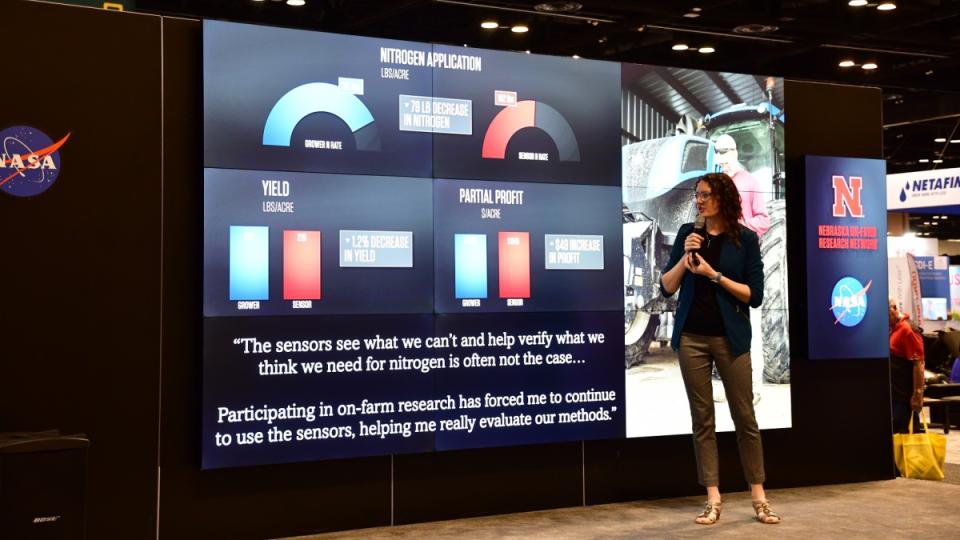
Husker Scientists Explain Digital Agriculture’s Benefits During Commodity Classic Presentations
Don’t think that remote sensing is a pie-in-the sky idea when it comes to modern agriculture. Sensor-supported farm management, in fact, is opening up major opportunities to help agricultural production be more efficient, environmentally sound and profitable.
University of Nebraska–Lincoln faculty members Laura Thompson and Laila Puntel made those observations during the recent national Commodity Classic event in Orlando, Florida. The UNL scientists, in collaboration with NASA, illustrated their points by explaining positive examples from Nebraska Extension’s On-Farm Research Network.
“Remote sensing can increase nitrogen fertilizer efficiency for a variety of production systems by allowing farmers to make more informed decisions about nitrogen management,” said Laura Thompson, director of the Nebraska On-Farm Research Network. “This resulted in increased profitability for farmers while decreasing negative environmental impacts.”
Laila Puntel, an assistant professor of precision agriculture and nutrient management at UNL, noted that drone imagery is now used in a significant portion of U.S. corn production but the resulting information isn’t used to its fullest to enable data-driven management decisions. Innovative research at UNL, in partnership with Nebraska producers, is showing how to achieve that progress, she said.
The live presentations by Puntel and Thompson were part of a NASA-hosted hyperwall series at the Commodity Classic, an annual national farmer-led event that this year set a record attendance exceeding 10,000 people. At the event, NASA underscored its commitment to U.S. agriculture by announcing the formation of NASA Acres, a public-private consortium in which the space agency will partner with organizations, universities and producers to “deliver NASA Earth observations into the hands of U.S. farmers.”
Online Master of Science in Agronomy
With a focus on industry applications and research, the online program is designed with maximum flexibility for today's working professionals.
